Located on Le Thanh Tong Street (Hanoi), nestled among rows of green ancient trees, completely isolated from the noise outside, Indochina University is the scientific cradle of many great intellectuals of Vietnam in the 20th century such as doctors Ton That Tung, Ton That Bach; painters To Ngoc Van, Bui Xuan Phai, Nguyen Gia Tri...
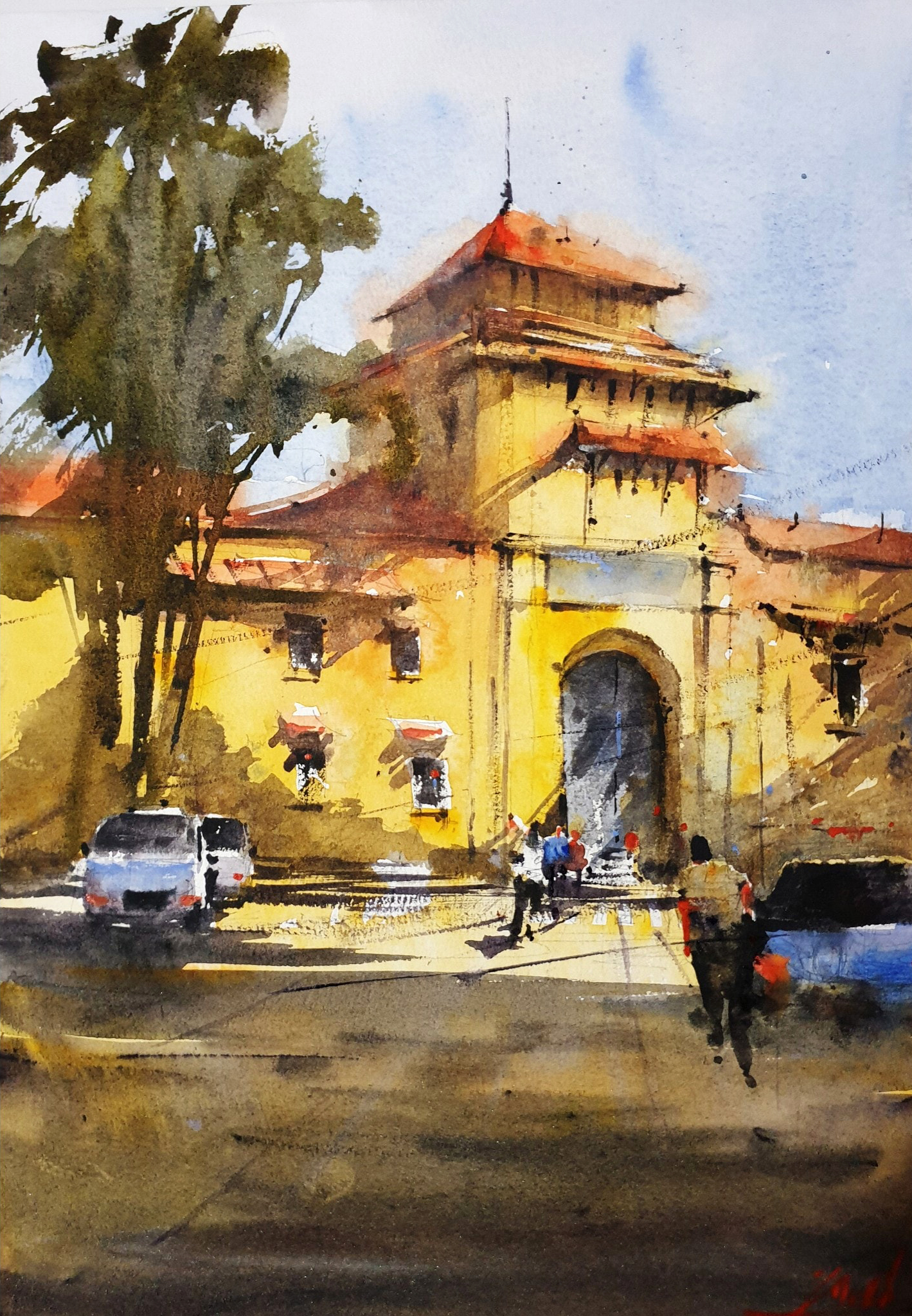
Sketch by Architect Le Ngoc Quang
In the Nguy Nhu Kon Tum Hall, there is a mural of nearly 80 m² (7 x 11 m, restored) with nearly 200 characters representing Vietnamese society in the early 20th century. The author is the first principal of the Indochina School of Fine Arts, painter Victor Tardieu (1870-1937).
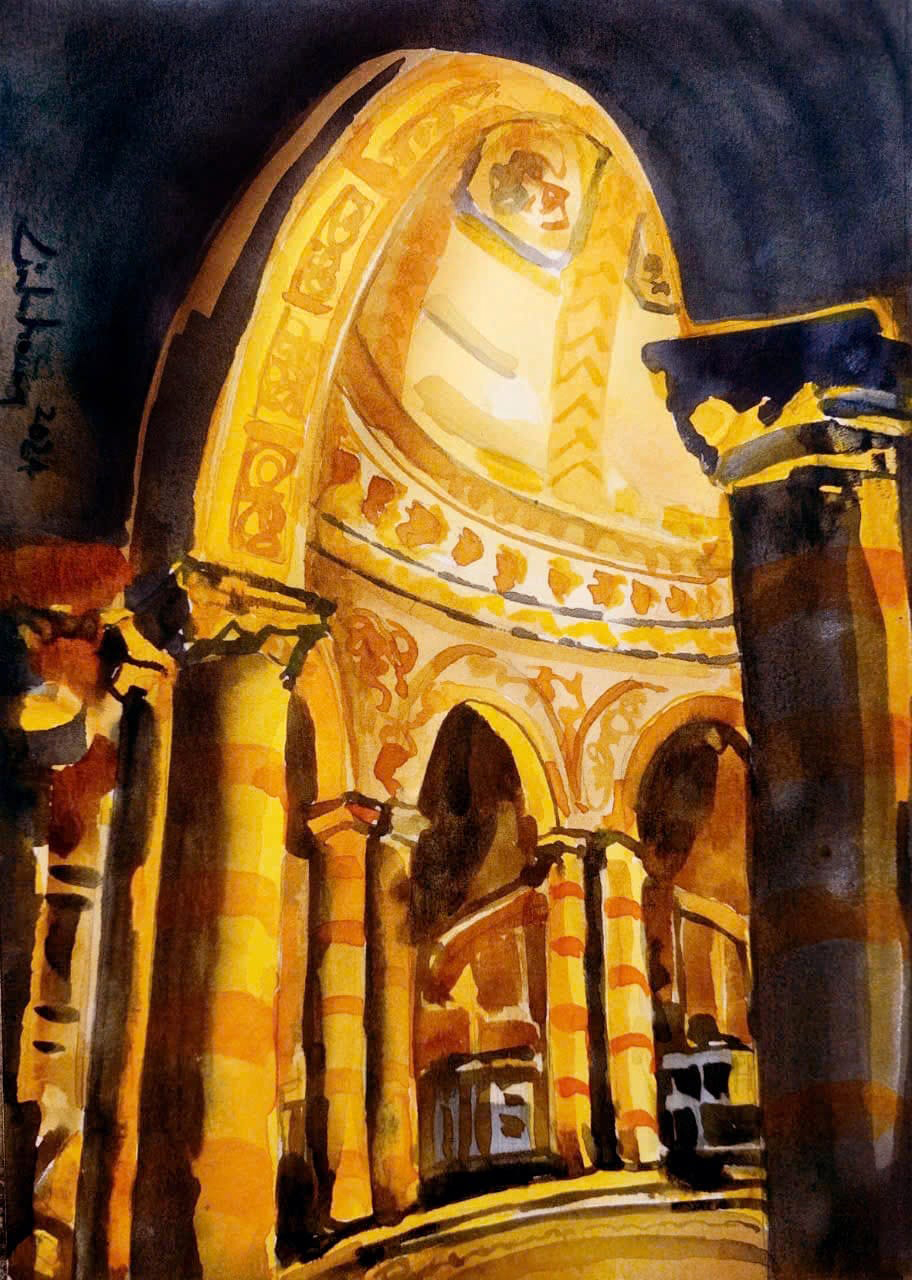
Main hall with dome and Neoclassical columns and decorations - sketch by architect Linh Hoang
In 1906, Governor-General of Indochina Paul Beau signed a decree to establish the University of Indochina to train native staff for the colonial government. In 1908, the school had to close due to insufficient students to meet the input requirements. In 1917, the University of Indochina was revived (after developing secondary and high schooleducation ). Before World War II, the University of Indochina had 14 member schools (of which, the degrees in Medicine and Law were equal to those of universities in France). After 1954, this place became Hanoi General University and the University of Medicine and Pharmacy. Currently, it is the Faculty of Chemistry, University of Natural Sciences (Hanoi National University) and Hanoi University of Pharmacy.
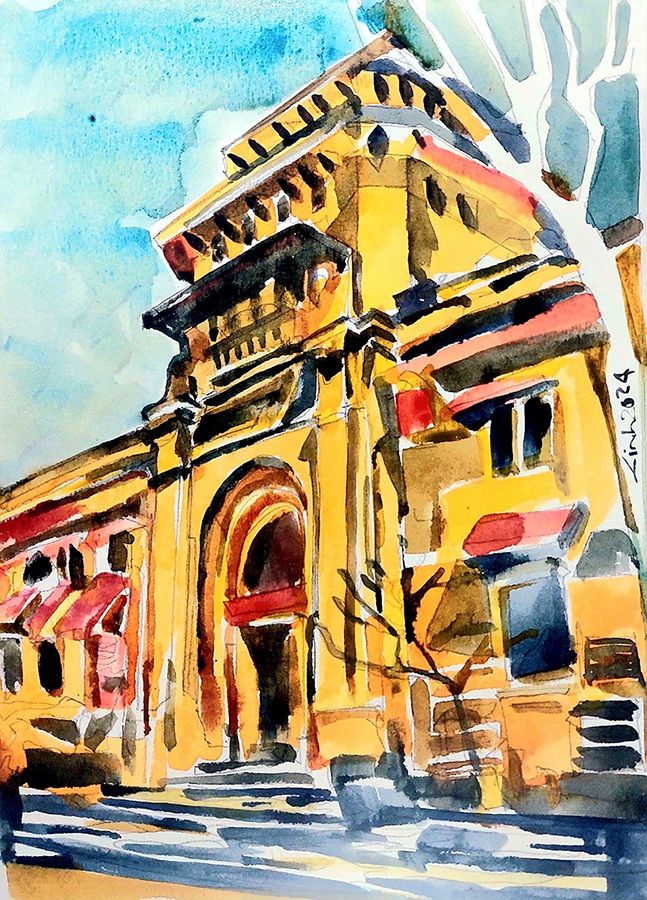
Building facade - sketch by architect Linh Hoang
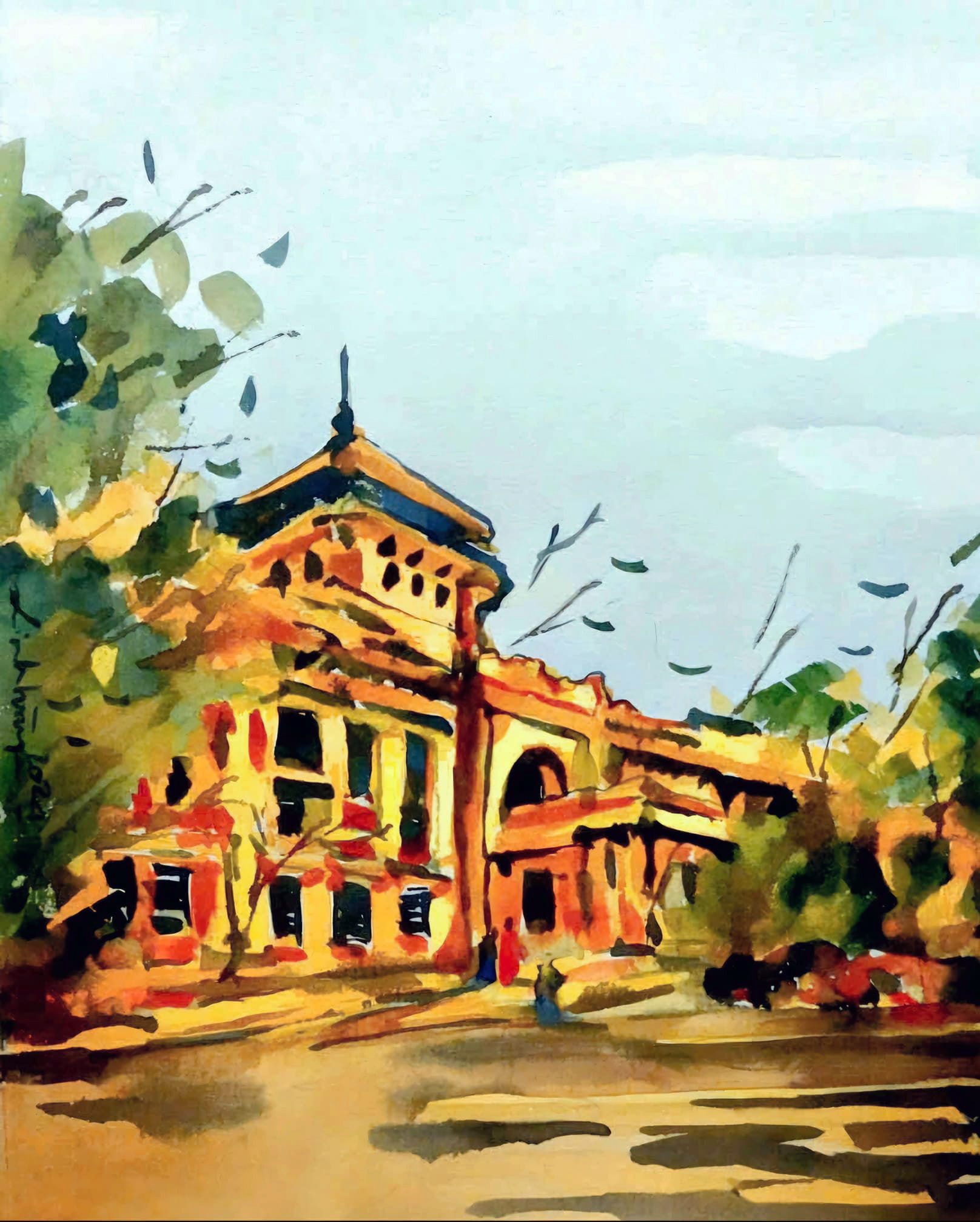
Sketch by Architect Linh Hoang
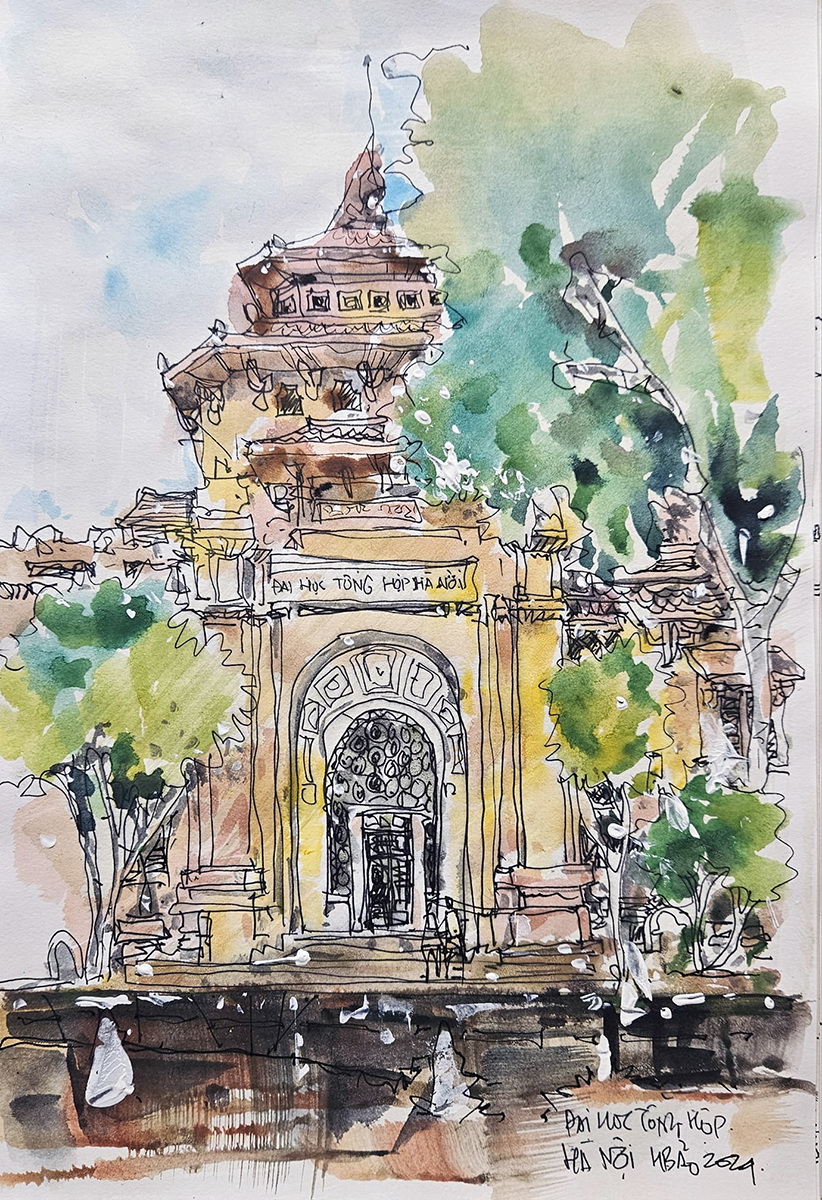
Sketch by Architect Bui Hoang Bao
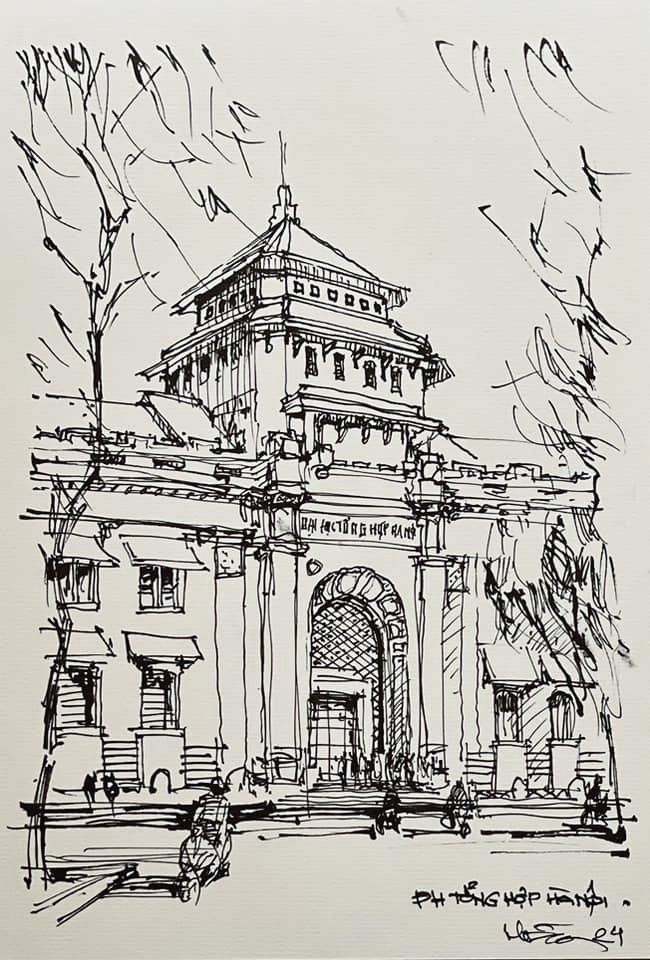
Sketch by Architect Tran Xuan Hong
The first design of Indochina University by architects Charles Lacollonge and Paul Sabrié had the appearance of 18th century French architecture with a giant dome, light tower, symmetrical statues on both sides of the entrance... However, the Director of the Department of Urban Planning and Architecture at that time, architect Ernest Hébrard (1875 - 1933) changed the drawing quite a lot in the direction of combining Asian - European architecture, called "Indochinese style".
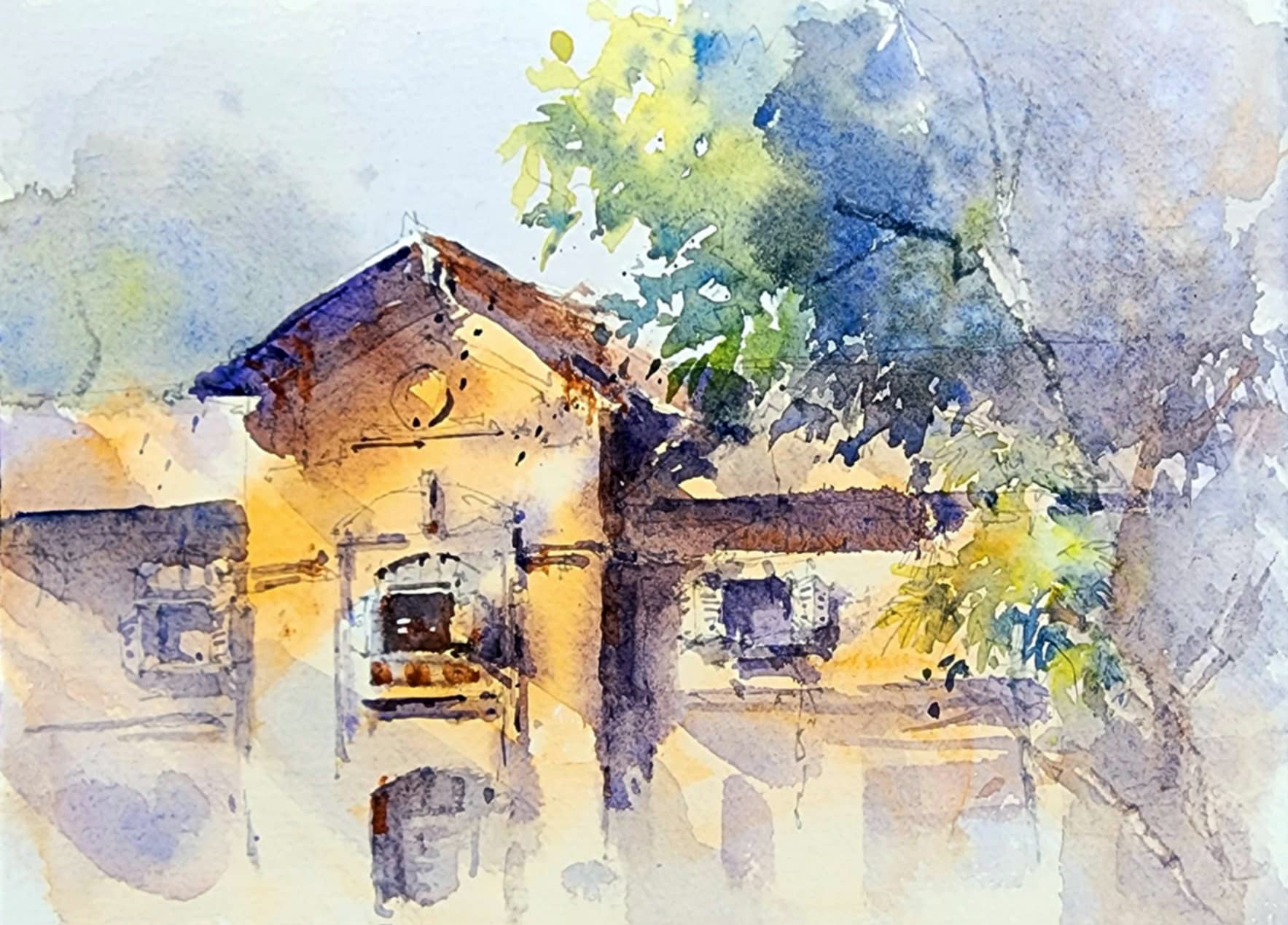
Classrooms - sketch by Lam Yen
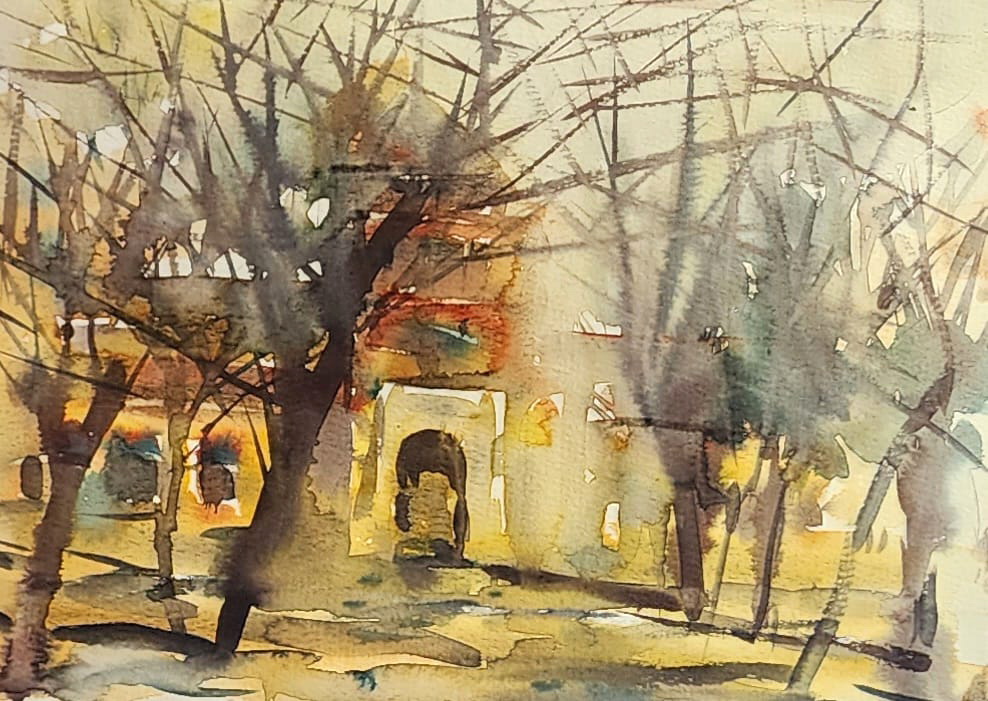
Sketch by Architect Phung The Huy
Specifically, the outer dome was replaced by a beveled quadrilateral pavilion with two layers of roof and a row of stilts supporting the roof in the ancient Chinese style; a small gate was built at the large dome gate... Small roofs above the windows prevented rain from splashing in. The high ceiling, open corridors, and natural ventilation were very suitable for the tropical climate.
Source: https://thanhnien.vn/goc-ky-hoa-dai-hoc-co-buc-tranh-tuong-tram-nam-tuoi-khung-nhat-viet-nam-185241123221920509.htm


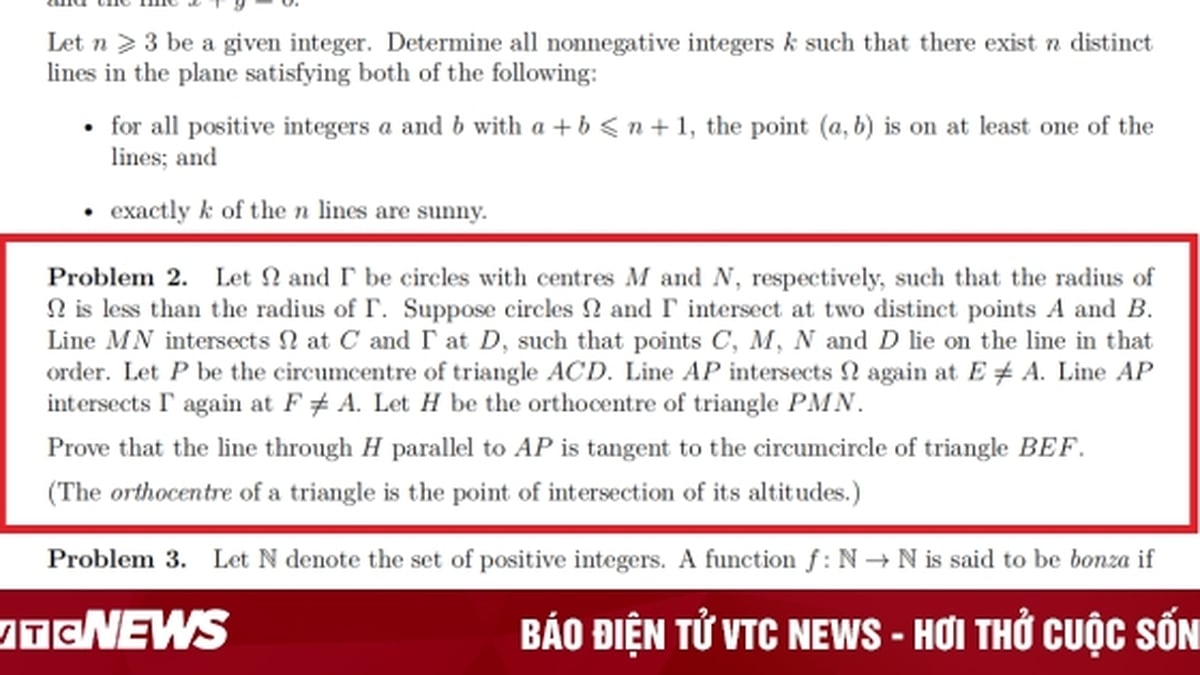
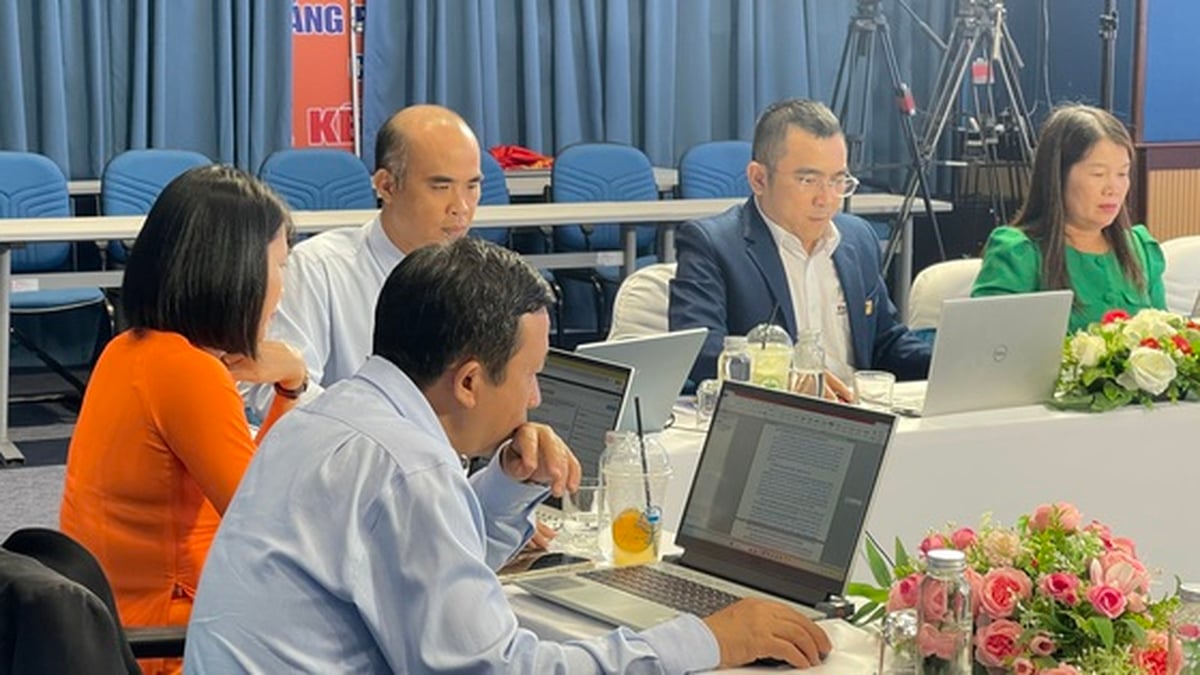
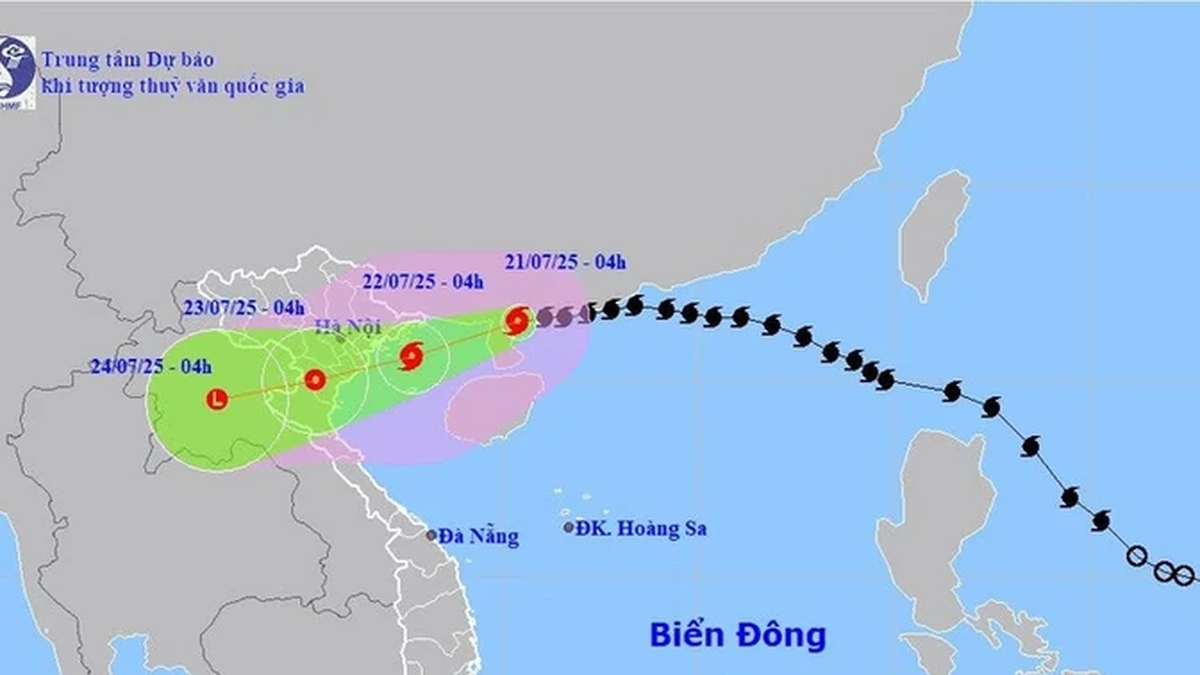
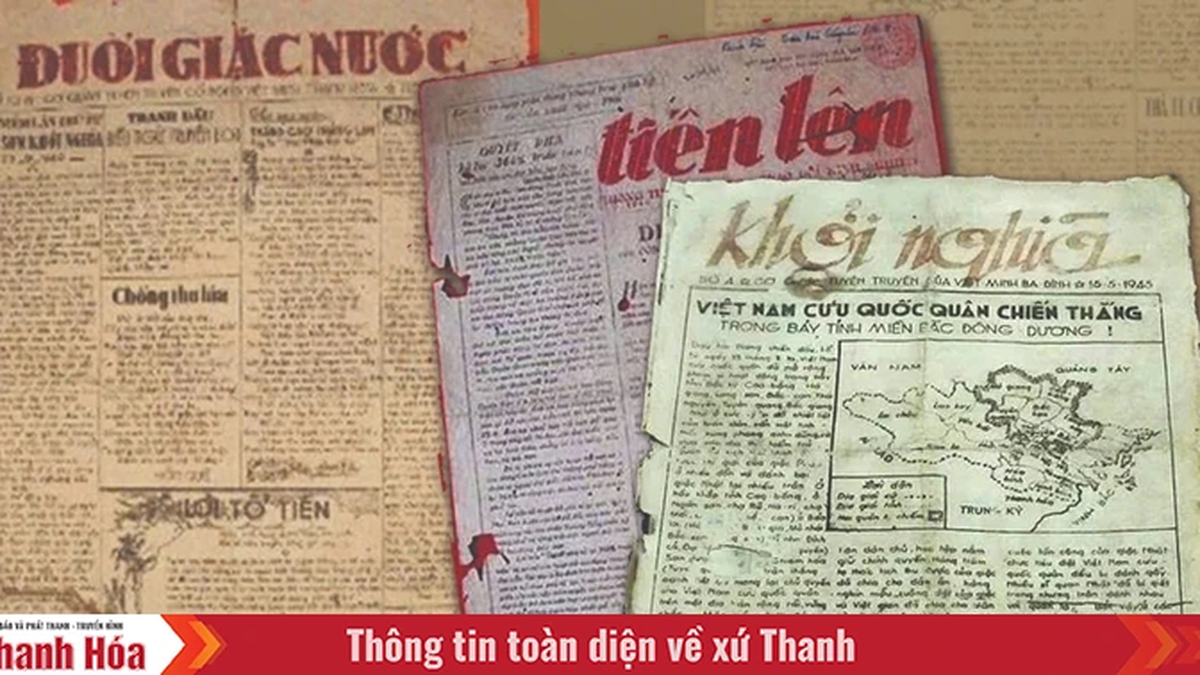
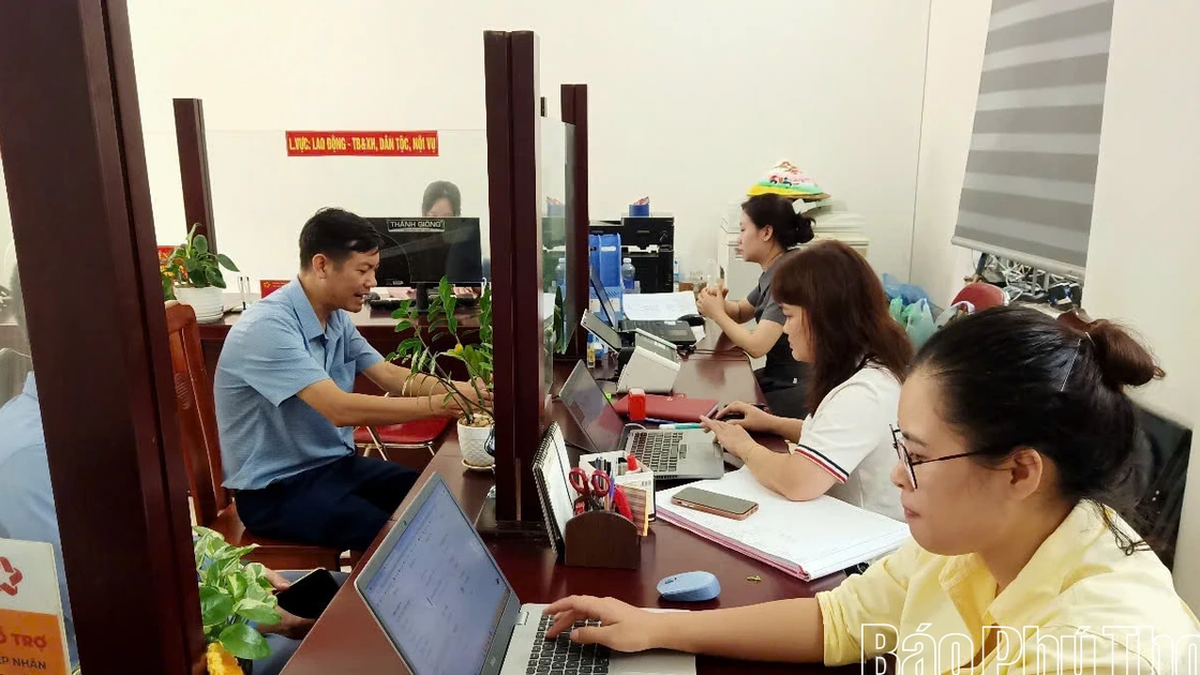


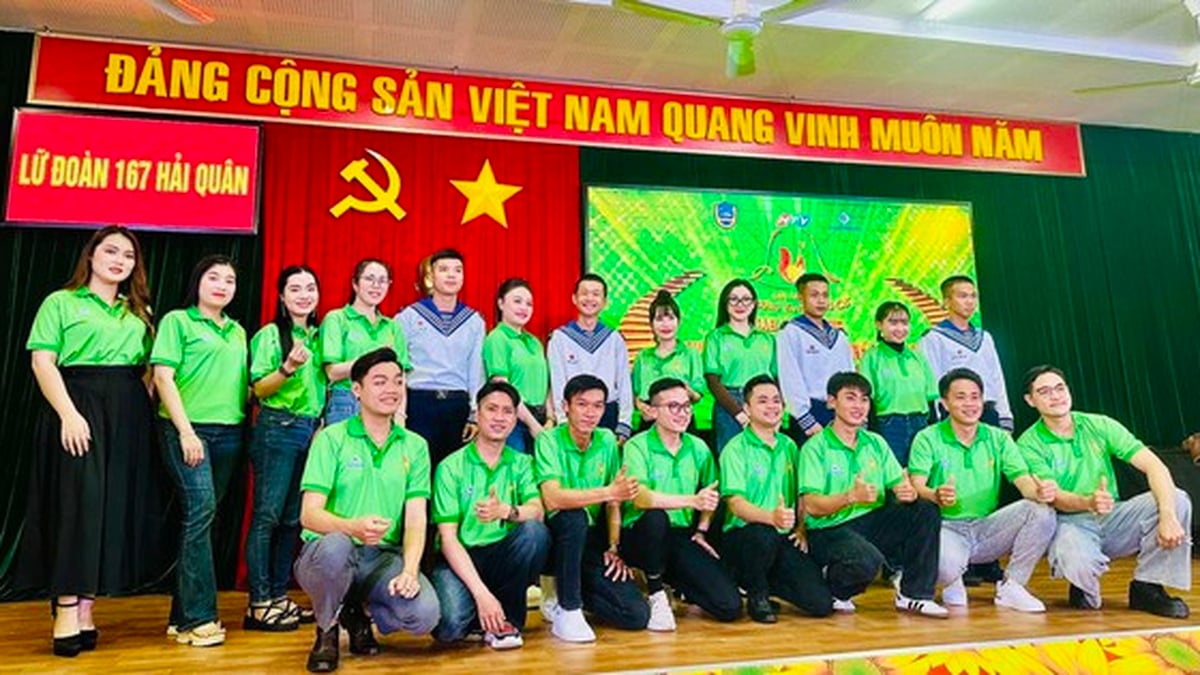
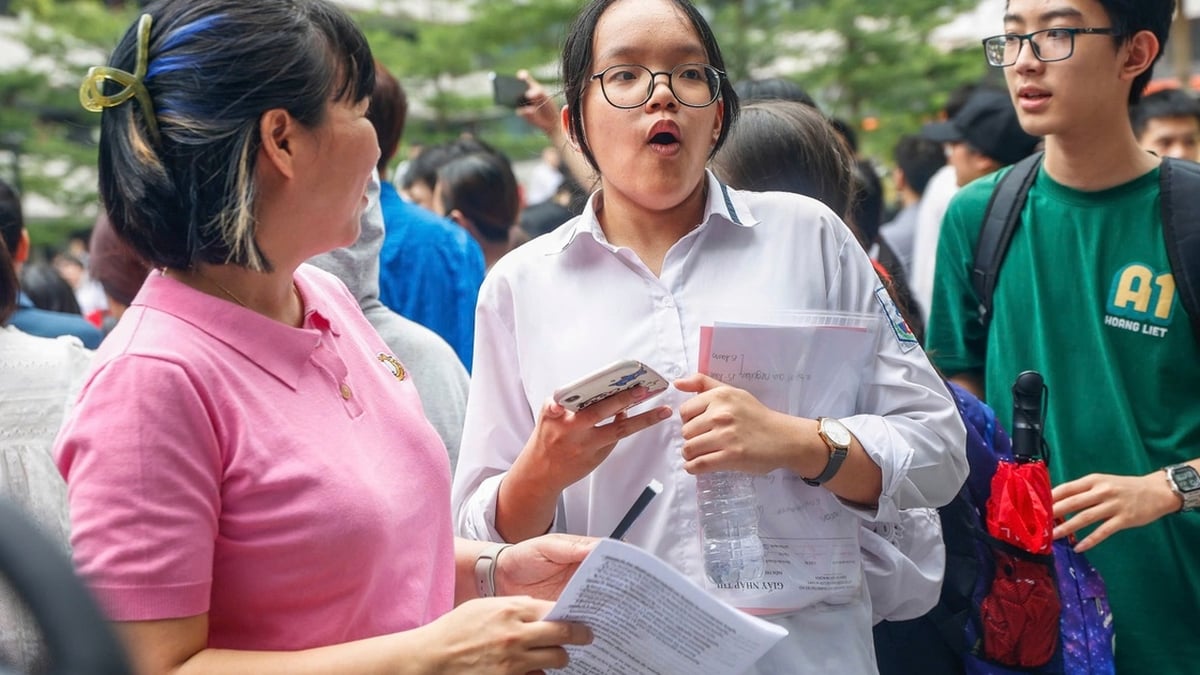



















![[Photo] National Assembly Chairman Tran Thanh Man visits Vietnamese Heroic Mother Ta Thi Tran](https://vphoto.vietnam.vn/thumb/1200x675/vietnam/resource/IMAGE/2025/7/20/765c0bd057dd44ad83ab89fe0255b783)





























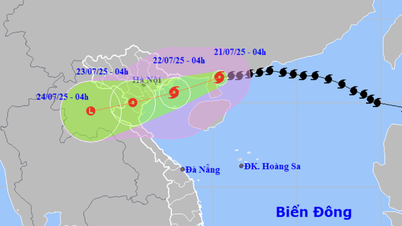




































Comment (0)